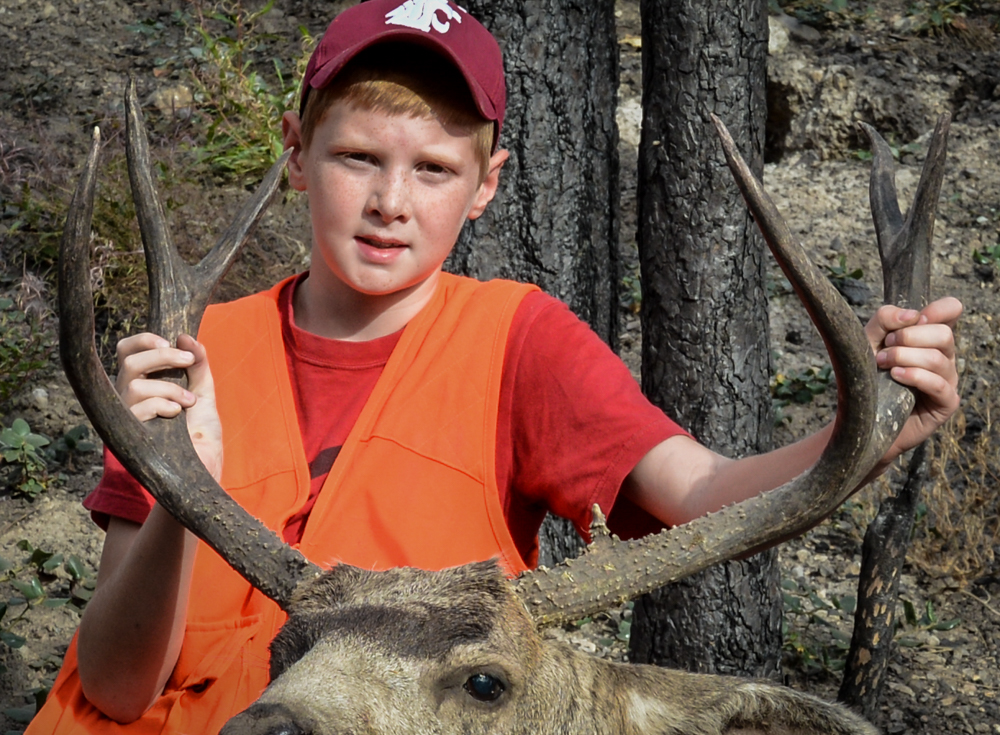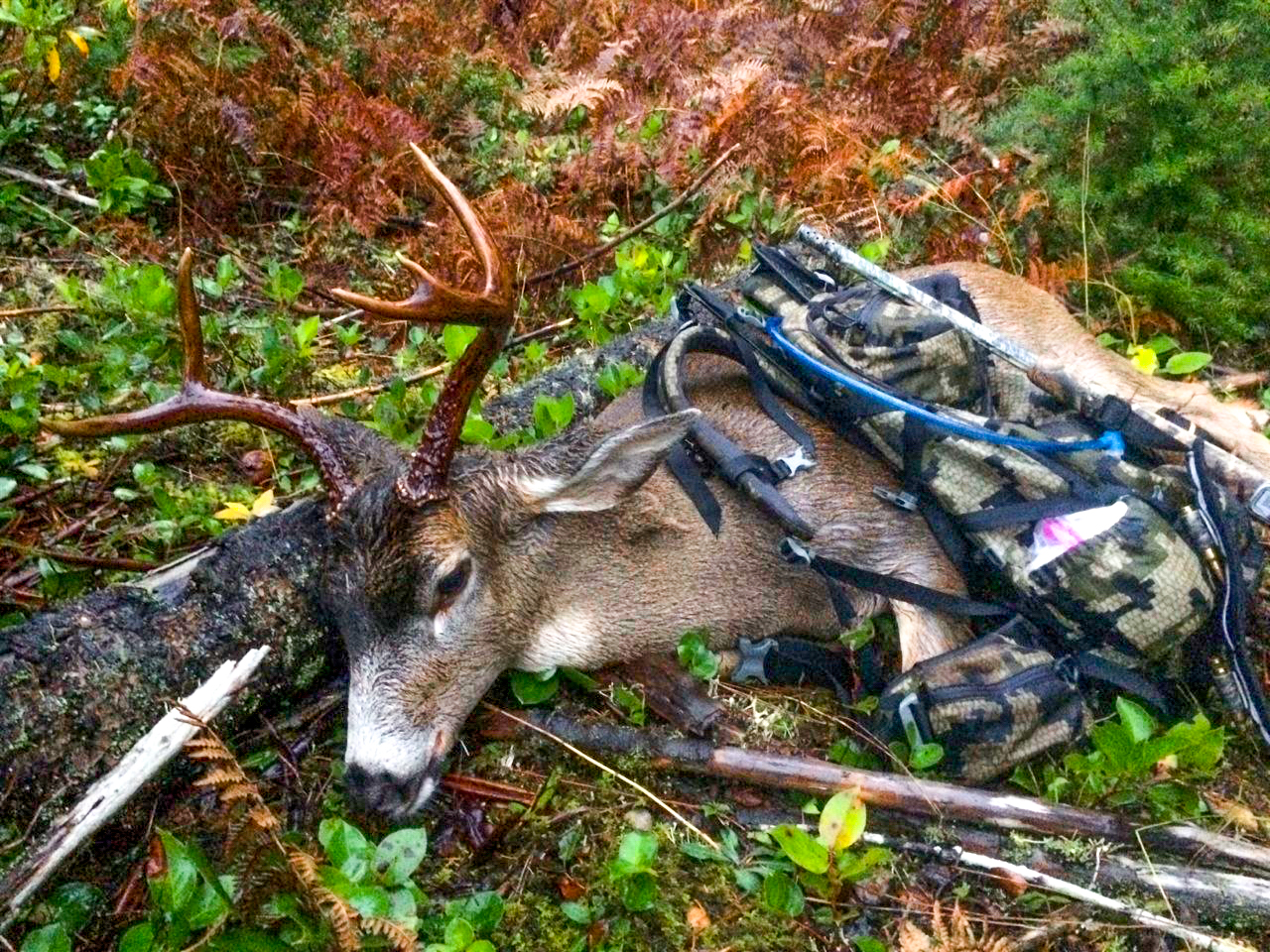Wildfire Deer Camp Alternatives Leave a reply
Alternatives for Deer Camp’s Affected by Wildfire
by Jason Brooks
With several wildfires burning up the Cascade mountains from Mt. Rainier to the Canadian border those that like to hunt mule deer might have to make different plans this year. With six major fires that are all but out of control with no end in sight until the snow falls along with the mule deer coming off of one of the worst winters in decades it seems that “deer camp” is closed. But one great thing about Washington is that we have three deer species to hunt and several options when it comes to chasing after them. Here are a few tips to help with this fall’s hunts.
1. Hunt Blacktails
It goes without saying that if you can’t get to your favorite mule deer grounds then stay on the west side and hunt blacktails. The smallest of our deer in this state is also one of the hardest to hunt. Most mature bucks prefer nighttime feeding during the first few weeks of Fall. But luckily the season is long with just over two full weeks for the October hunt and a four-day late season in November for rifle hunters. Archery and muzzle loader hunters have even longer and more liberal seasons.
Blacktails don’t need much room to roam as most live their entire lives in two-hundred acres or less. If you find a nice blacktail buck then keep concentrating on that area. You are likely to find him again. As the rut nears-starting the last few days of the general modern firearm season and ending around the weekend of the late buck hunt-bucks stay our during the daytime longer and will even respond to rattling and calling.
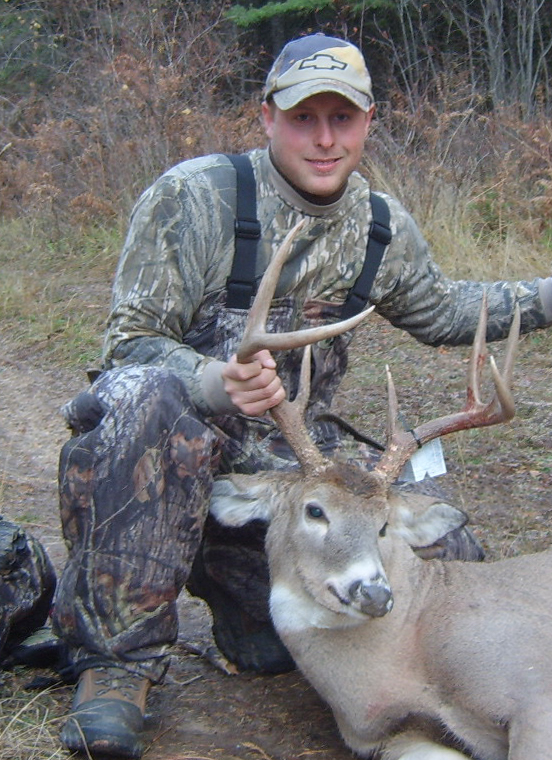
Chase after Whitetails like this buck that Brian Chlipala found just east of the Washington-Idaho border. -Brian Chlipala
2. Chase Whitetails
For hunters who hunt Eastern Washington it might be a great year to switch over to the whitetail deer. Mostly found in the far eastern portions of the state there are pockets of whitetails in the Okanogan area as well as some in northern Chelan County. In Southwest Washington the high jumping, tail wagging deer is found in the foothills of the blues. In the Northeast above Spokane whitetails are just about everywhere. Your hardest part of the whitetail hunt will be gaining access to the many small parcels of private lands that “checkerboard” the public lands.
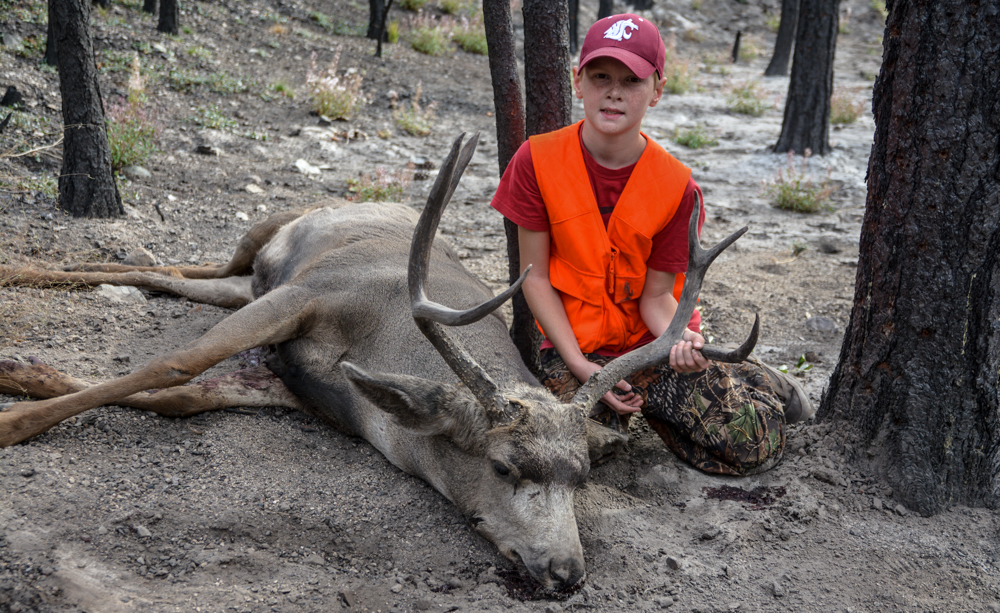
Mule Deer can be found in recent burns, such as this buck taken by Ryan Brooks in the Methow after the 2015 fire -Jason Brooks
3. Hunt smart for Mule Deer
Yes, there are still places to hunt mulies this fall. Look towards the Snake River breaks and the vast lands managed by the BLM. Other options include the WDFW lands in Grant, Asotin, Douglas, Ferry, and Benton Counties. The Blue mountains also have some really good mule deer bucks and Forest Service lands.
If you do decide to hunt near the fire areas keep in mind that there will be some closures outside of the burns. This is mostly due to remote access and the need to fight the fires or rehabilitate them once the fall rains come. Fires burn in a mosaic pattern and there will be places on the fringe of the fires that will hold deer. If we get a good rain once the fire is out then grasses will sprout and the green-up is welcomed by deer getting ready for winter. Make sure to check with the local ranger district for any access restrictions. You can also find current fire information at the Forest Service fire website.
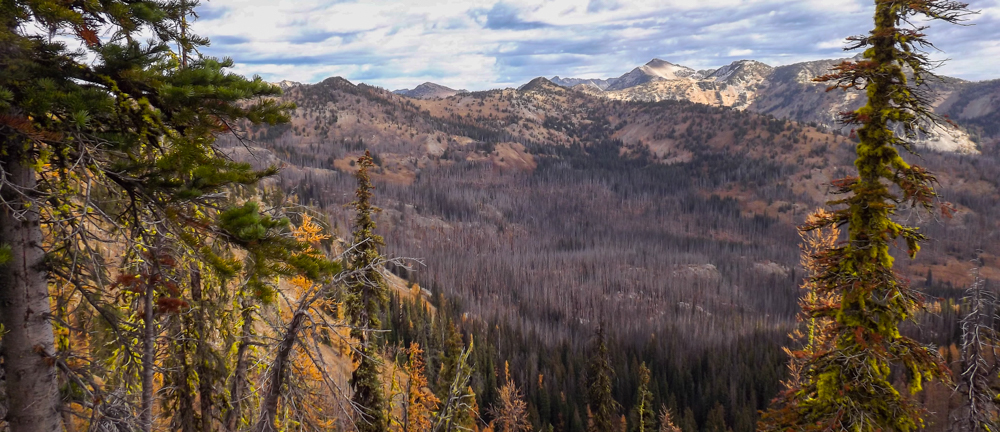
Fire’s will eventually provide more feed for mule deer and the hunting will get better in time. -Jason Brooks
The Future
For this fall most of the mule deer areas will be affected, either directly by the fires or by over-use from hunters looking to find a place to go after being closed out of their normal spots. One thing wildfire does is open up the canopy to allow grasses and brush to grow. By next spring the buckbrush will be growing and the deer will return quickly to the burn areas. In 2015 we hunted in a burn that occurred earlier in the summer and my son took an exceptional buck. The deer had been sneaking down to an alfalfa field at night and by mid-day was back in the fresh burn. By bedding in the deep ash the buck had virtually no ticks on him. He was healthy and fat.
This shows promise as deer can bounce back pretty fast from wildfires. It will take a few years to recover from the harsh winter of 2016-17 but with next year’s excessive feed from the new burns this will actually help the deer recover quicker. Keep a positive mind and use this year to find a back-up plan. Who knows, you might just find yourself in a new deer camp and an adventure of a lifetime.
Jason Brooks
The Outdoor Line Blogger


